Top 6 Historical Sites to Visit Along the Cotswold Way
By Mark Wright
The Cotswold Way is a stunning 102 mile trail that winds through some of England’s most picturesque landscapes. As you walk along this iconic route, you’ll encounter a wealth of fascinating historical sites, each of them offering a glimpse into the past.
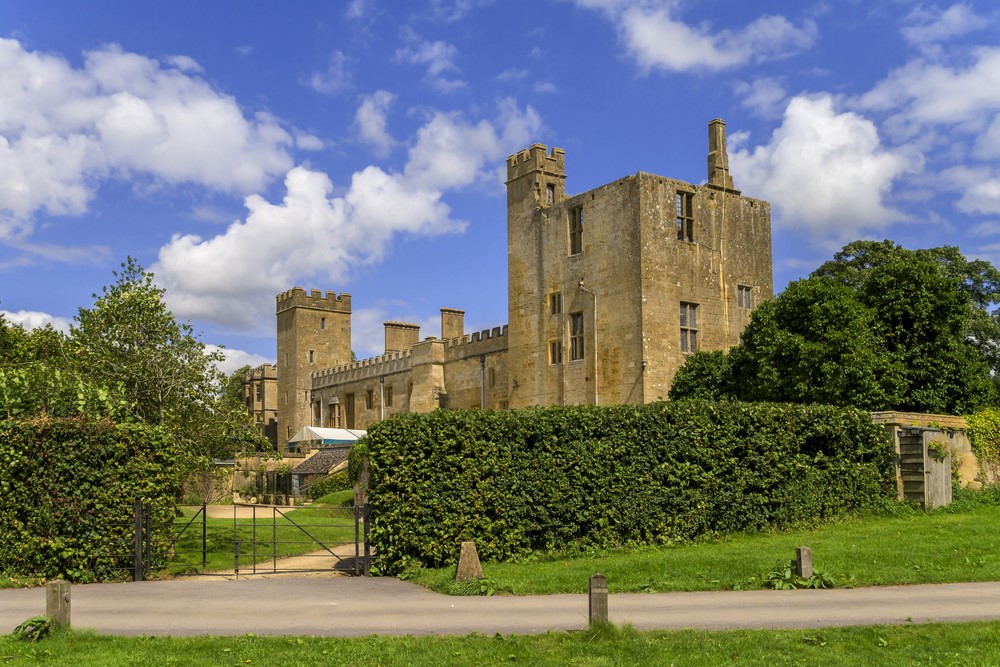
In this blog, we’ve highlighted six must-see landmarks that showcase the region’s diverse history – from ancient burial sites to medieval castles and grand abbeys. Whether you’re a history enthusiast or simply looking to explore the timeless beauty of the Cotswolds, these sites offer something truly special along the way.
Broadway Tower
Perched on Middle Hill, the second-highest point in the Cotswolds, Broadway Tower is a striking folly with a fascinating history, and some of the most spectacular views along the Cotswold Way. Designed in the late 18th century by the renowned landscape architect Capability Brown, this elegant tower was built at the request of Lady Coventry, who wished to see if a beacon on the hill could be viewed from her home in Worcester – over 20 miles away.
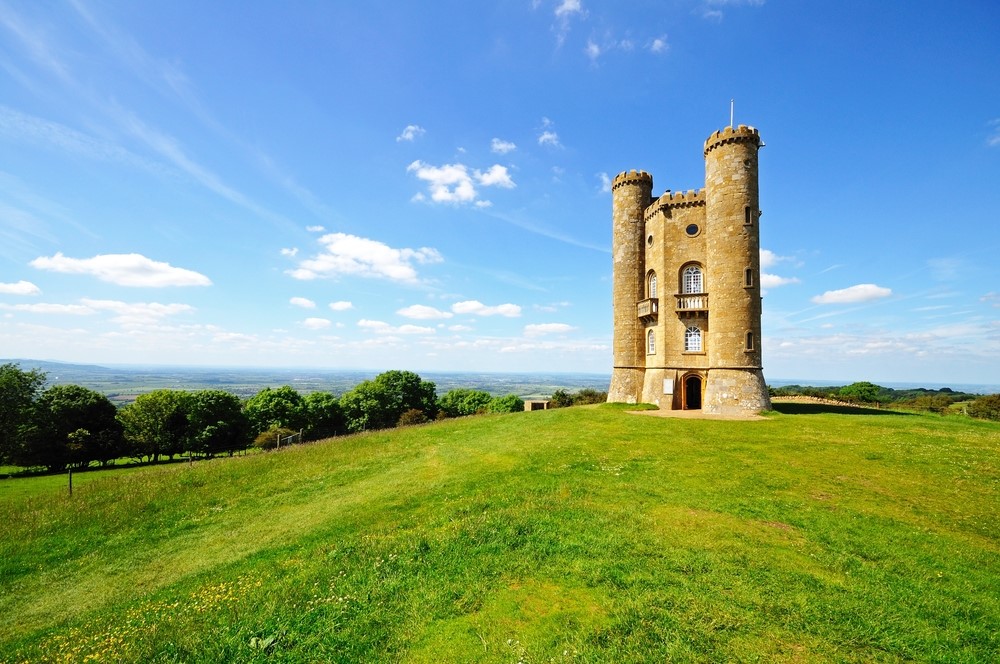
Over the centuries, Broadway Tower has served as a countryside retreat, a printing press for William Morris and the Arts and Crafts movement, and even a wartime observation post. Today, it welcomes visitors keen to take in its sweeping panoramas, which on a clear day stretch across 16 counties.
Set within a 200-acre estate, Broadway Tower is a striking landmark with a fascinating history, while the surrounding parkland is home to a resident herd of red deer, as well as a welcoming café, making it a delightful stopping point on the journey south. Whether admiring the views, exploring the tower, or simply enjoying a well-earned rest, this iconic site is an unmissable highlight of the Cotswold Way.
Hailes Abbey
Just a short distance before Winchcombe, the evocative ruins of Hailes Abbey offer a glimpse into England’s medieval past. Founded in 1246 by Richard, Earl of Cornwall, this once-flourishing Cistercian monastery became a significant site of pilgrimage, drawing thousands of visitors who came to see its most treasured relic – the Holy Blood of Hailes, said to be a vial of Christ’s own blood. Though later exposed as a fraud, the relic cemented the abbey’s importance for centuries until the dissolution of the monasteries under Henry VIII.
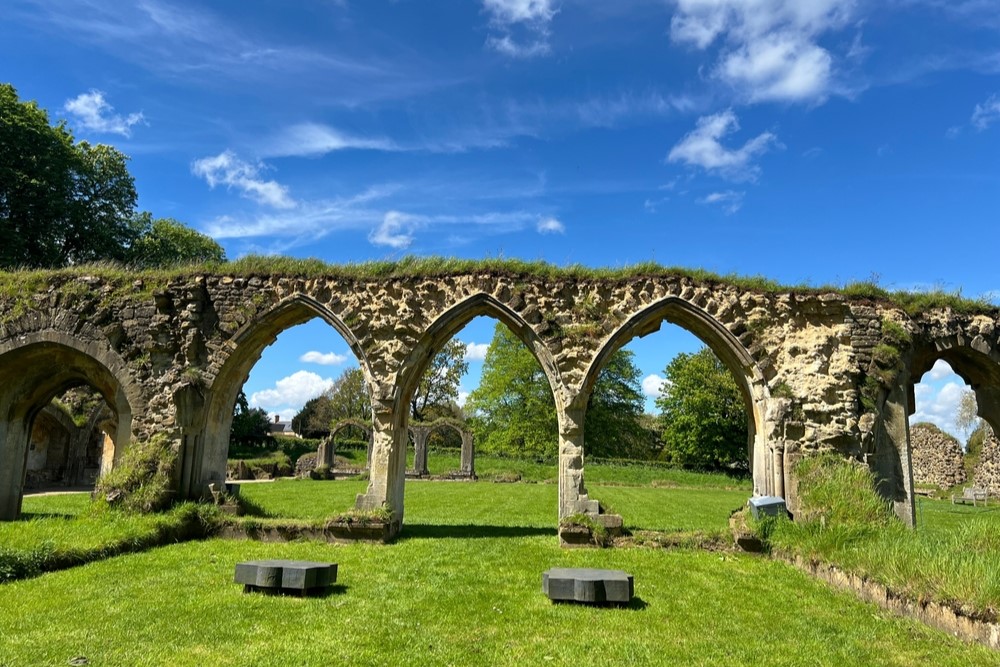
Today, the ruins exude a quiet beauty, with fragments of soaring arches, weathered stone walls, and peaceful cloisters still hinting at the grandeur of the abbey’s former life. Information panels bring the site’s fascinating history to life, while the on-site museum houses exquisite medieval carvings and artefacts. Visitors can explore the tranquil grounds, where wildflowers now bloom among the fallen masonry.
With its rich history, picturesque setting, and ties to one of the most dramatic periods in English history, Hailes Abbey is a must-visit for those walking the Cotswold Way.
Sudeley Castle
Nestled in the picturesque countryside near Winchcombe, Sudeley Castle is one of the Cotswold Way’s most captivating historical sites. With origins dating back over a thousand years, this magnificent castle has played a role in some of England’s most defining moments. Its greatest claim to fame is its connection to Katherine Parr, the last wife of Henry VIII, who lived here after the king’s death and is buried within the castle’s grounds – the only English queen to rest in a private estate.
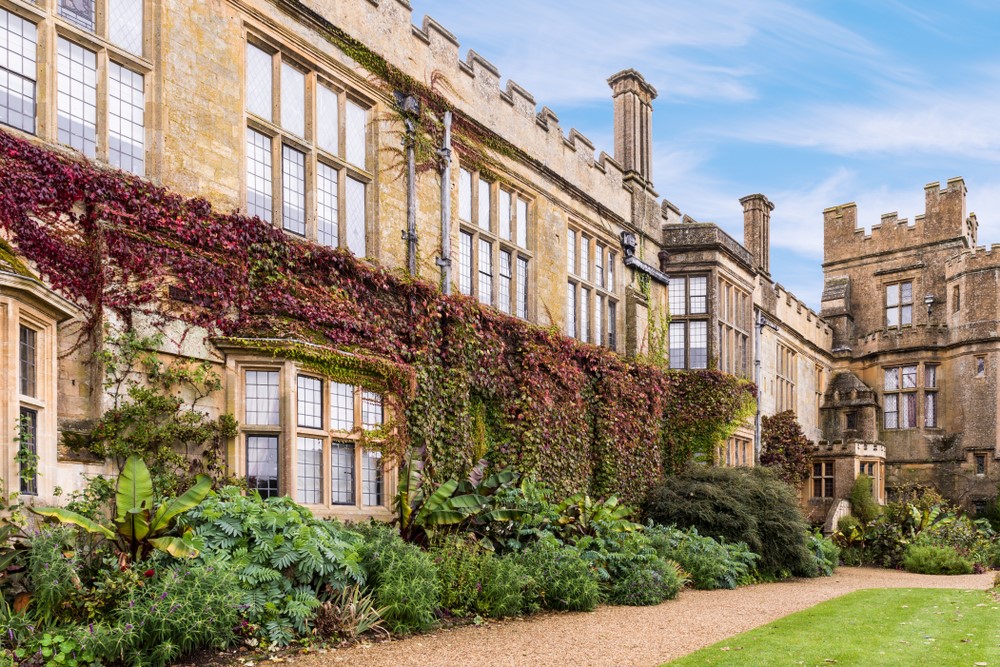
Walking through Sudeley’s grand halls and tranquil gardens, visitors step into a world where royalty once roamed. The castle hosted the likes of Elizabeth I, who dined beneath its opulent ceilings, and Richard III, who once owned the estate. The ruins of the 15th-century banqueting hall, standing gracefully amidst the gardens, tell of Sudeley’s turbulent past, particularly its destruction during the English Civil War.
Today, the castle is a harmonious blend of historic grandeur and vibrant restoration. The award-winning gardens, including the Queen’s Garden with its exquisite roses, provide a peaceful retreat, while the exhibitions and artefacts within the castle bring its fascinating history to life. For those walking the Cotswold Way, Sudeley Castle is more than just a stop along the route – it’s a window into England’s royal and medieval past, offering a fascinating glimpse into centuries of history.
Belas Knap Long Barrow
Situated on Cleeve Hill, the highest point in the Cotswolds, Belas Knap Long Barrow offers a remarkable connection to the region’s ancient past. Located between Winchcombe and Cheltenham, this well-preserved burial chamber dates back around 5,500 years to the Neolithic period. Its position on top of the hill provides stunning views of the surrounding countryside, adding to the site’s peaceful and contemplative atmosphere.
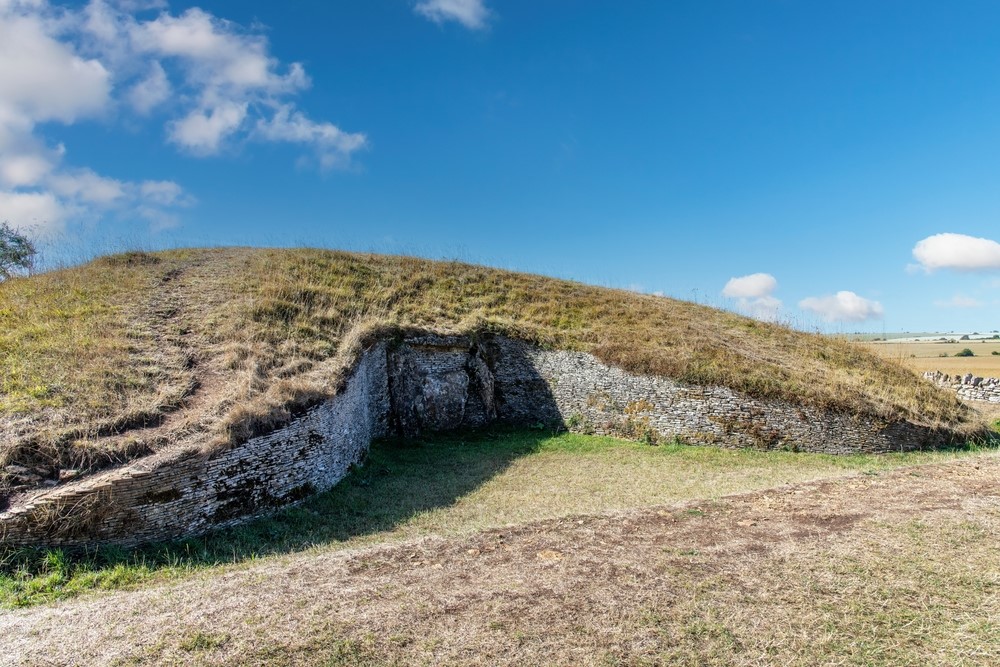
The barrow’s unique structure, with its capstone and entrance stone, is beautifully set against the rolling hills. As you stand before it, you can imagine the ancient people who built it, shaping the landscape with their beliefs and rituals. The site’s significance is highlighted by informative displays, shedding light on its archaeological findings and the long-standing connection between the land and its earliest inhabitants.
For those walking the Cotswold Way, Belas Knap Long Barrow offers not only a glimpse into the distant past but also a quiet space for reflection. Its historical mystery and connection to the ancient landscape make it a truly remarkable stop on your journey through this rich and timeless area.
The Tynedale Monument
Standing tall on the slopes of the Cotswold Hills, the Tyndale Monument commemorates the life and work of William Tyndale, the pioneering scholar who translated the Bible into English during the 16th century. Erected in 1866, this striking 121-foot tower offers sweeping views over the picturesque Vale of Gloucester, stretching to the Malvern Hills on clear days. Tyndale’s courageous efforts in making the Bible accessible to English speakers ultimately led to his martyrdom, and the monument serves as a tribute to his legacy of faith and courage.
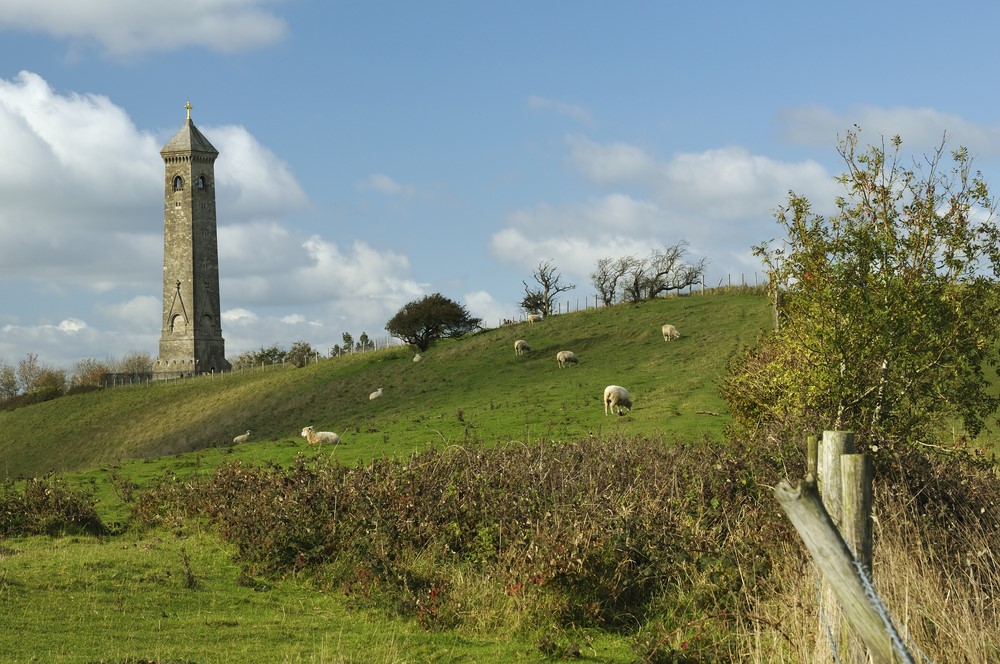
The tower, built from local stone, stands with a commanding presence, a beacon to both history and the surrounding landscape. Visitors can climb the steps to the top for panoramic views, which allow them to appreciate both the natural beauty and the historical significance of the site. The nearby information panels provide insight into Tyndale’s life, highlighting his extraordinary contributions to both religious and linguistic history.
For walkers on the Cotswold Way, the Tyndale Monument is a memorable stop. Its dramatic location and deep connection to England’s religious history make it a must-visit along the trail.
Bath Abbey
Bath Abbey stands as a masterpiece of Gothic architecture and a site of worship for over a thousand years. After days of walking through rolling countryside, historic villages, and ancient landmarks, reaching this magnificent abbey feels like a fitting conclusion to your journey.
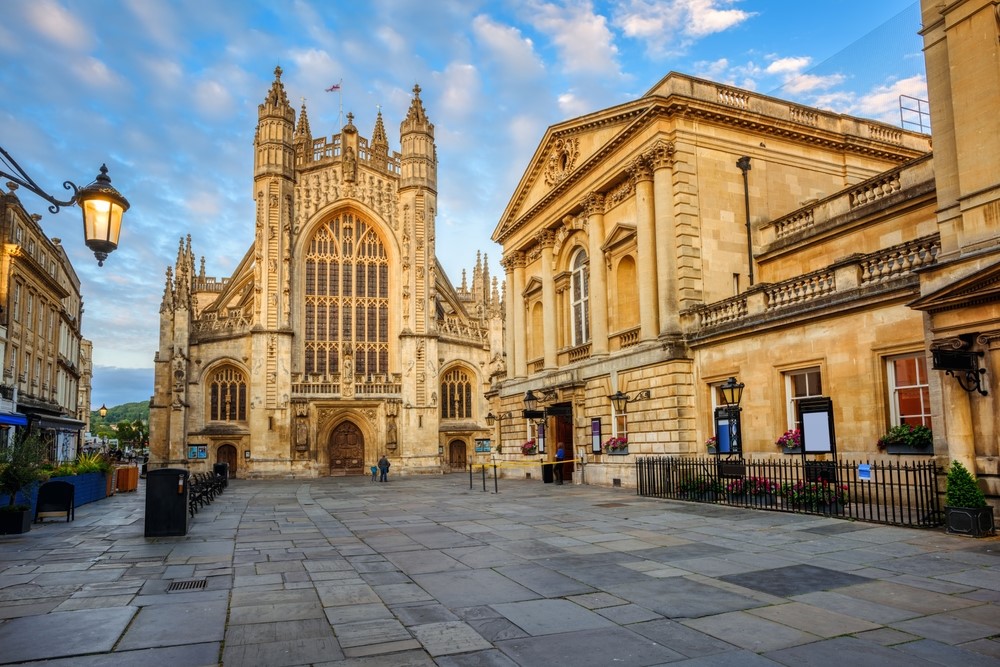
The present abbey was built in the late 15th century, though earlier churches stood on the site dating back to the 7th century. Its most striking feature is the grand west façade, where carved stone angels appear to climb Jacob’s Ladder toward heaven – an image said to have come to Bishop Oliver King in a dream. Inside, golden light filters through the Great East Window, illuminating the vast nave with scenes from the Bible, while the beautifully carved wooden choir stalls echo with centuries of song.
Bath Abbey is also the final resting place of notable figures, including James Montague, the bishop responsible for its restoration after the dissolution of the monasteries. Before you leave, consider climbing the 212 steps to the tower, where breathtaking views over Bath’s honey-hued skyline and surrounding hills offer a final moment of reflection on the journey you’ve completed.
With its sense of peace, grandeur, and history, Bath Abbey provides a truly special place to pause, reflect, and celebrate the achievement of walking the Cotswold Way.
Walking the Cotswold Way is not just a journey through breathtaking landscapes but also a walk through history. From ancient burial sites and medieval castles to grand abbeys and towering monuments, the trail is rich with stories of the past waiting to be discovered. Whether you’re a history enthusiast or simply looking to add depth to your walking experience, these sites bring the heritage of the Cotswolds to life.
Ready to explore the Cotswold Way for yourself? Get in touch, and we’ll help plan your perfect walking holiday. Email us at [email protected] or call 017687 72335 to speak with our friendly team today!
For further reading on the Cotswold Way, take a look at Why you should walk the Cotswold Way and Anne-Marie’s Cotswold Way Adventure.